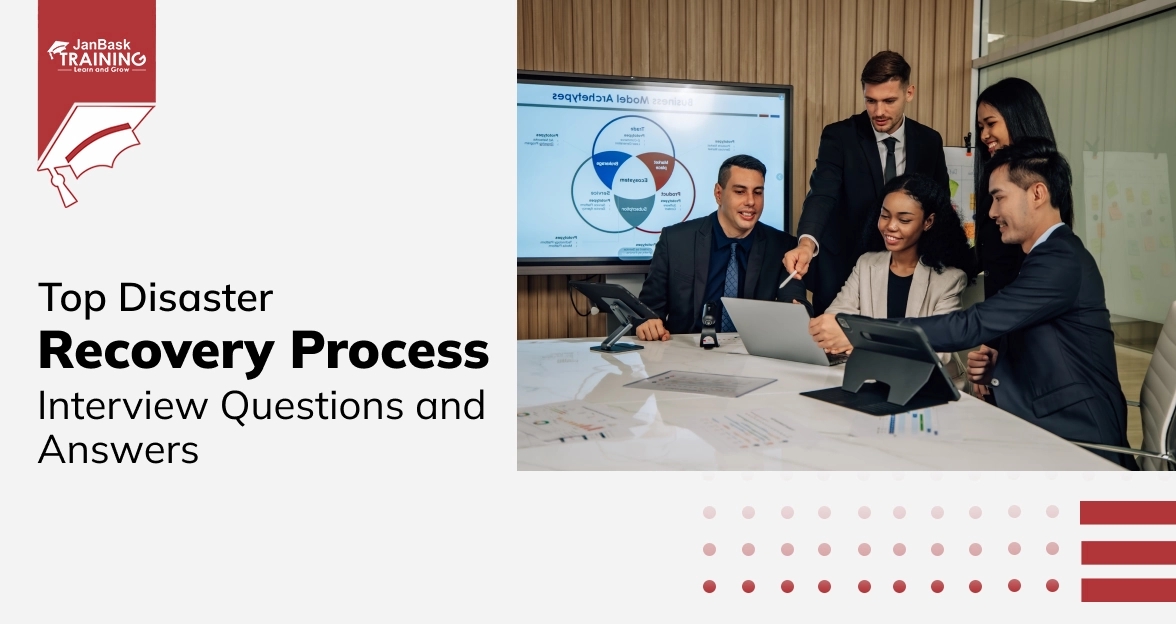 Grab Deal : Upto 30% off on live classes + 2 free self-paced courses - SCHEDULE CALL
Grab Deal : Upto 30% off on live classes + 2 free self-paced courses - SCHEDULE CALL

 Grab Deal : Upto 30% off on live classes + 2 free self-paced courses - SCHEDULE CALL
Grab Deal : Upto 30% off on live classes + 2 free self-paced courses - SCHEDULE CALL

The Incident Response Process is a structured approach cybersecurity teams use to effectively handle security breaches and cyber-attacks. It's crucial in cybersecurity because it minimizes the damage caused by incidents, protects sensitive data, and restores normal operations swiftly. For beginners in cybersecurity, understanding the Incident Response Process demonstrates knowledge of proactive security measures, problem-solving skills, and the ability to think under pressure.
A: It's when someone messes with a company's essential data or when the security measures fail.
A: Incident responders are the first line of defense during a security problem. They jump into action when there's a cyber threat, working fast to find, stop, and fix the issue. They also create security rules, guidelines, and reports to prevent future problems.
A: When a system crashes, you need a Disaster Recovery Plan (DRP) document to get things back on track. This document has all the steps to recover lost data after a crash
A: Port scanning is like checking all the doors and windows in a house to see if any are open. It helps an incident responder see what's happening on a network and whether someone is trying to sneak in.
A: SIEM (Security information and event management) is a high-tech system that detects threats and helps stop them quickly. It monitors a network in real-time and determines if anything is wrong.
A: An incident trigger is like a warning sign that a cyber threat might be present. When they pop up, incident responders know they need to act fast.
A: To check if an email is fishy, you can:
Look up the sender's IP address in a WHOIS database.
Find the IP address in the email's header.
Open the email and check its header.
Use the WHOIS database to find the sender's location.
A: Vulnerability assessment is crucial because it helps find weak spots in a network that attackers could exploit. Cybercriminals are always searching for these openings to cause trouble, so it's vital to check networks regularly for vulnerabilities. This can be done using special tools like SIEM or manual testing.
A: Here are some excellent tools for keeping networks safe:
Network monitoring tool: Like Splunk, which helps watch over the network.
Packet sniffers: Tools like Wireshark or John-the-ripper help see what's happening with data packets.
Encryption tools: Tor and TrueCrypt help keep data safe from prying eyes.
A: Event log correlation is crucial because it helps spot patterns across different data sources. By looking at logs from servers, computers, firewalls, and other systems, you get a complete picture of what's happening. This helps detect and respond to security issues faster. Special rules and tools, like those found in SIEM platforms, can automate this process.
A: An Advanced Persistent Threat is a sneaky attack in which intruders sneak past a company's defenses and hang around undetected. They've been responsible for some big security breaches lately. To handle them, it's essential to control who has access to what and regularly test systems for weaknesses. Also, educating employees about security risks can help. To catch these threats, you need a skilled team who can watch over the network and spot unusual behavior.
A: To check if an email is fishy, you can:
Look up the IP address in a WHOIS database.
Find the IP address in the email's header.
Open the email and check its header.
Use the WHOIS database to find the sender's location.
A: Automated incident response helps response teams react to cyber threats quickly. Examples include:
Automatically updating the firewall to block wrong IP addresses.
Quarantining infected systems to stop the spread.
Gathering logs and info from all parts of the network.
A: As an incident responder, you might face:
Cross-site scripting: Where attackers sneak destructive code onto websites.
SQL injection attacks: When attackers mess with a website's database.
DoS attack: An attempt to overwhelm a system, making it crash.
A: Alerts can come from:
Intrusion detection systems (IDS).
Security information and event management (SIEM) tools.
Antivirus software.
Firewalls.
Reports from users.
A: To determine the priority and severity level, you will need to also take into consideration the following aspects of the business:
Functional impact of the incident on the business: The importance of the affected system for the business will directly affect the incident's priority. All stakeholders in the affected system should be aware of the issue and will have their input in determining priorities.
Type of information affected by the incident: Every time you deal with PII, your incident will have high priority; therefore, this is one of the first elements to verify during an incident.
Recoverability: After the initial assessment, it is possible to estimate how long it will take to recover from an incident. The amount of time needed, combined with the system's criticality, could drive the incident's priority to high severity.
In addition to these fundamental areas, an incident response process also needs to define
How will it interact with third parties, partners, and customers?
A: Every incident that starts must have an end, and what happens between the beginning and the end are different phases that will determine the outcome of the response process. This is an ongoing process that we call the incident life cycle. What we have described until now can be considered the preparation phase. However, this phase is broader than that—it also partially implements security controls created based on the initial risk assessment (this was supposedly done even before creating the incident response process).
Also included in the preparation phase is the implementation of other security controls, such as:
Endpoint protection
Malware protection
Network security
The preparation phase is not static, and the following diagram shows that it will receive input from post-incident activity.
A: Handling an incident in the context of the IR life cycle includes the detection and containment phases. In order to detect a threat, your detection system must be aware of the attack vectors. Since the threat landscape changes so rapidly, the detection system must be able to dynamically learn more about new threats and behaviors and trigger an alert if a suspicious activity is encountered.
While the detection system will automatically detect many attacks, the end-user has an important role in identifying and reporting the issue in case they find suspicious activity.
For this reason, the end user should also be aware of the different attack types and learn how to create an incident ticket to address such behavior manually. This should be part of the security awareness training.
Even with users diligently watching for suspicious activities and sensors configured to send alerts when an attempt to compromise is detected, the most challenging part of an IR process is still the accuracy of detecting what is truly a security incident.
Often, you will need to manually gather information from different sources to see if the alert you received reflects an attempt to exploit a vulnerability in the system. Keep in mind that data gathering must be done in compliance with the company's policy. In scenarios where you need to bring the data to a court of law, guarantee the data's integrity.
A: You can only determine what's abnormal if you know what's expected. In other words, if a user opens a new incident saying that the server's performance is slow, you must know all the variables before you jump to a conclusion. You must first know the average speed to know if the server is slow. This also applies to networks, appliances, and other devices. To mitigate scenarios like this, make sure you have the following in place:
System profile
Network profile/baseline
Log-retention policy
Clock synchronization across all systems
Based on this, you can establish what's normal across all systems and networks. This will be very useful when an incident occurs, and you need to determine what's expected before troubleshooting the issue from a security perspective.
A: Ideally, you should have one single incident response process that covers both significant scenarios—on-premises and cloud. This means you must update your current process to include all relevant information related to the cloud.
Make sure that you review the entire IR lifecycle to include cloud-computing-related aspects. For example, during the preparation, you need to update the contact list to include the cloud provider contact information, on-call process, etc. The same applies to other phases:
Detection: Depending on the cloud model you are using, you want to include the cloud provider solution for detection to assist you during the investigation.
Cyber Security Training & Certification

JanBask Training's cybersecurity courses can greatly assist beginners by providing comprehensive knowledge of incident response protocols and practices. Their courses cover cybersecurity topics, including incident response methodologies, tools, and techniques. Students gain practical experience managing security incidents effectively with hands-on training and practical exercises.

Top Disaster Recovery Process Interview Questions and Answers

Essential Antivirus Interview Questions and Answers

Vulnerability Management Interview Questions and Answers

CEH Reconnaissance Interview Questions & Answers

Cyber Security

QA

Salesforce

Business Analyst

MS SQL Server

Data Science

DevOps

Hadoop

Python

Artificial Intelligence

Machine Learning

Tableau
Download Syllabus
Get Complete Course Syllabus
Enroll For Demo Class
It will take less than a minute
Tutorials
Interviews
You must be logged in to post a comment